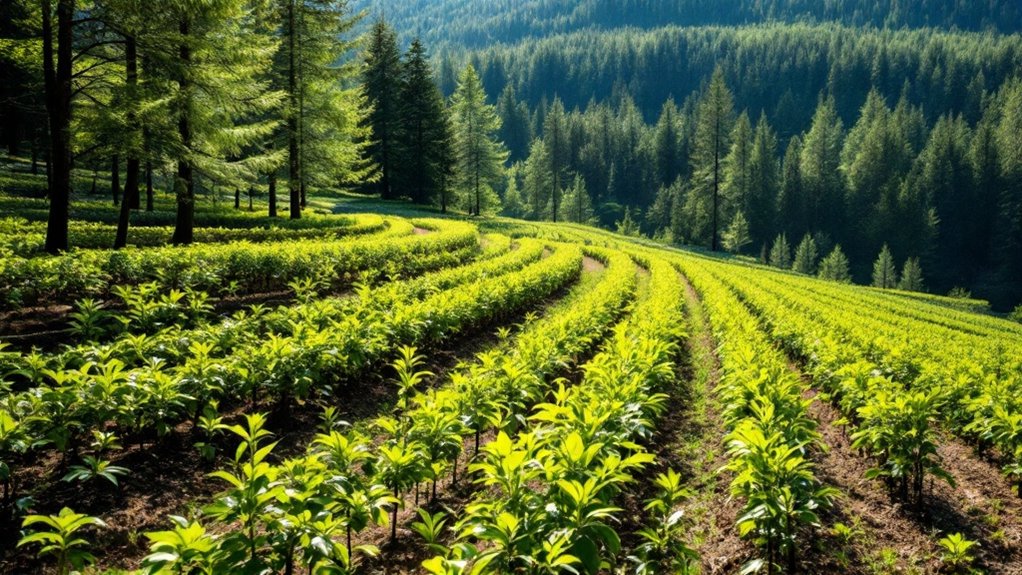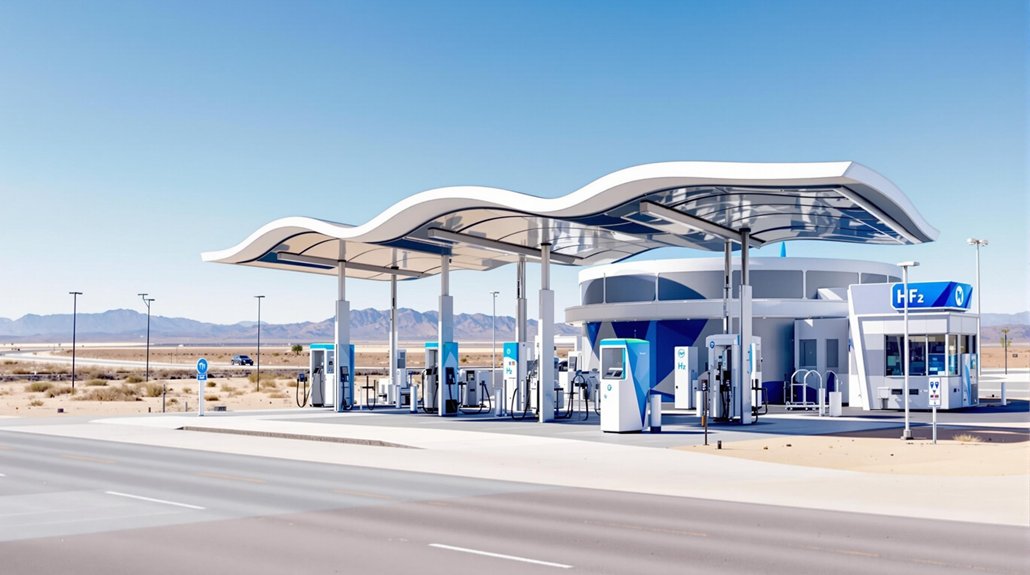Carbon credits from forests can be lucrative, but they’re not a get-rich-quick scheme. New forests sequester 2-10 tons of CO2 per acre annually, while mature forests capture 0.5-3 tons. Each ton equals one carbon credit, valued between $3 and $50+. Do the math: that’s $10 to $500 per acre yearly. The catch? Most programs want 40+ acres minimum and a commitment longer than most marriages. There’s more to this green gold rush than meets the eye.

Forests are nature’s carbon-eating machines. These leafy giants don’t just provide shade and habitat – they’re literally sucking carbon dioxide out of the air and storing it away. Young forests are particularly greedy, gobbling up 2-5 tons of CO2 per acre annually. Their mature counterparts? Not quite as hungry, managing only 0.5-3 tons per acre each year. But those overachieving pine trees? They can devour up to 10 tons per acre. Show-offs. This natural process helps maintain ecological balance and supports diverse wildlife species.
The carbon credit market turns this tree-eating action into cold, hard cash. One credit equals one metric ton of CO2 sequestered. Simple math. New forests typically generate 2-10 credits per acre yearly, while older forests produce 0.5-3 credits. These credits are worth anywhere from $3 to $50+ each, meaning a single acre of trees could earn between $10 and $500 annually. Not bad for just standing there and breathing. Fast-growing species like Pinus radiata can earn significantly more credits in their early years compared to native forests.
Getting into the carbon credit game isn’t exactly a walk in the park, though. Most programs want at least 40-100 acres of land. Some will grudgingly accept 10 acres, but they’re not thrilled about it. And forget about claiming credits for trees you were legally required to plant anyway – that’s cheating. The commitment is serious too – we’re talking 40+ years. That’s longer than most marriages. Initial costs and revenue create a significant time gap, as most projects don’t see their first credit issuance until 5-7 years after planting.
The whole process is surprisingly complex. First comes the carbon counting – measuring every tree like some obsessive arborist. Then there’s modeling, planning, and verification. Third-party validators swoop in to make sure nobody’s pulling a fast one.
The upfront costs? A cool $50,000 to $200,000. Ouch.
Success depends on multiple factors: tree species, climate, soil quality, and management practices. Even then, there’s always the risk of nature throwing a wrench in the works – fires, pests, or diseases could wipe out years of carbon storage overnight. Welcome to the world of forest carbon credits, where making money requires patience, land, and a whole lot of trees doing their thing.








